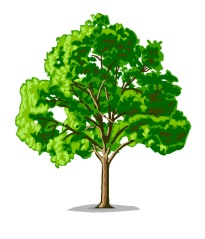Copyright © University of Cambridge. All rights reserved.
'How Tall?' printed from https://nrich.maths.org/
How Tall?

Here is part of the conversation between a group of children as they discuss a tall tree nearby:
"I wonder how tall it is?" says Linus.
"I think we could find out ," replies Raj.
"It could be difficult as it's very high," says Toby.
I wonder how they each went about finding out the height of the tree?
I wonder how YOU would find out how tall a large tree in your surroundings is?
Why do this problem?
This
activity is designed to create a challenge that is completely new to pupils so they will not have practised particular ways to approach situations like it. They will therefore have to use their initiative and draw on potentially useful problem-solving skills. This task also provides
an excellent opportunity for a discussion about different approaches that have been used once children have had chance to tackle it in their own way.
Possible approach
You could introduce the challenge by projecting the image of the tree and asking a child to read out the conversation. Give the class a few minutes of individual thinking time, then ask them to talk to a partner about how they might go about finding out the height of the tree. Explain that you're not expecting them to know straight away how to
do it but encourage them to persevere and devise a way.
Give them plenty of time to plan what they would do and then ask some pairs to explain their proposed methods to the whole group. At this stage, it is important to allow a substantial length of time for discussion. What do the children think the advantages and disadvantages of the different approaches are? Invite pairs to decide on a method that they think is the "best" and
encourage explanations as to why. It will be interesting to note those who opt for someone else's method rather than pursuing their own.
It may be appropriate for you (or them) to find a suitable tree in the school grounds for them to carry out their plans practically. It is possible that difficulties might arise as they try out their chosen approach so watch out for the ways in which different pupils overcome any challenges.
It would be very beneficial to have a final plenary following on from the practical experimentation. How will the group judge how well their method worked? This would also be a chance for the class to discuss whether they would use a different method if given a similar challenge on a future occasion.
Key questions
What do you think of your method?
What do you think about what (so-and-so) said?
Do you see any ways of improving their method?
If you were asked to do something similar again what way do you think you would try?
Possible extension
You could give some learners a similar challenge where the tall object is not so easily accessible, for example a tree on the other side of a fence, a lighthouse etc.
Possible support
It may be that you decide to carry out the practical side of this challenge on a different day to the introduction. This way you will have time to gather together any equipment that the pupils might request.
